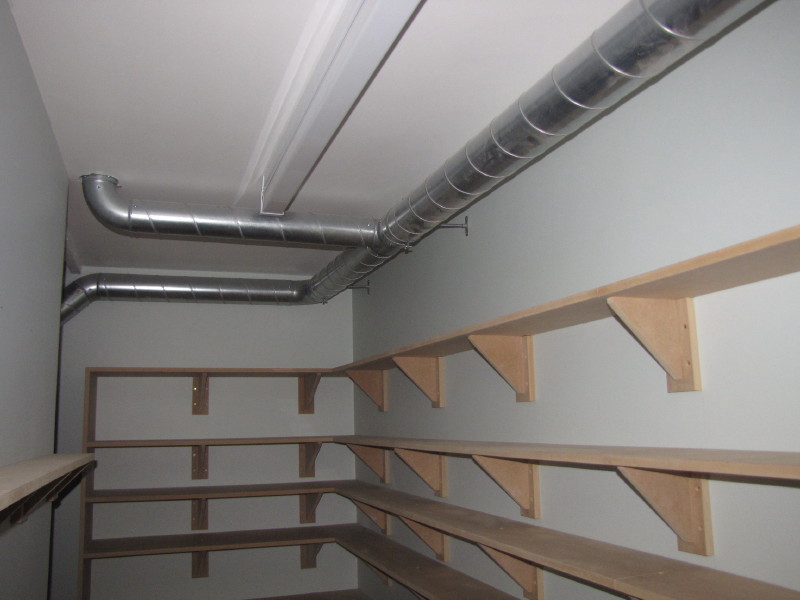We are fitting a balanced mechanical ventilation system with a heat recovery unit (MVHR). This is a ducted supply and extract system that removes moist air from wet rooms and supplies fresh air to living rooms and bedrooms. The heat energy in the extract air stream is recovered by the heat recovery unit and this is channelled into the supply air stream so that the heat energy is not lost. I evaluate many of these systems as part of my work and have found that there are frequently problems with the way the systems are designed, installed, or commissioned.. Often there are shortcomings on all three elements, – and the systems are getting bad press as a result. As we are beginning to build to increasing airtightness standards (and we are going fairly airtight here), we need a ventilation strategy that will deliver fresh air to satisfy the need for good indoor air quality. But, it is important to mitigate the resultant energy losses (extracting heated air) and use (power for fan) by employing an efficient ventilation system. If it can recover heat energy, then all the better.
I am keen to evaluate a system that has been well-designed, installed and commissioned – to monitor the system over a period of years and get some really good long-term data on the performance of an efficiently operated system. We have opted for a Paul Novus 300 unit, which is currently one of the most efficient MVHR systems on the market (94.4% heat recovery efficiency) and is certified by the Passivhaus Institut. Whilst the system can be efficient, the weak link in many systems is the ductwork that links all the outlets to the MVHR system. As the photo shows, we are using Lindab SAFE ducting, which is tubular steel ducting – not flexible plastic that many systems are. I am a firm believer that the ducting should be considered part of the long term fabric of the property – the MVHR may need replacing after, say 20 years, but I would hope to connect to the existing ducts when the time comes and not rip the house apart to replace that. The resistance in a rigid ducting system is also much, much lower, compared to flexible, meaning the system will move air much more efficiently and quietly.
The installation, designed in association with the Green Building Store, has commenced on the lower ground floor, and will need to be done in two or three phases (so more posts to follow). The MVHR unit itself is going into the existing kitchen, but we can only install this once we have moved out and into the new kitchen.


